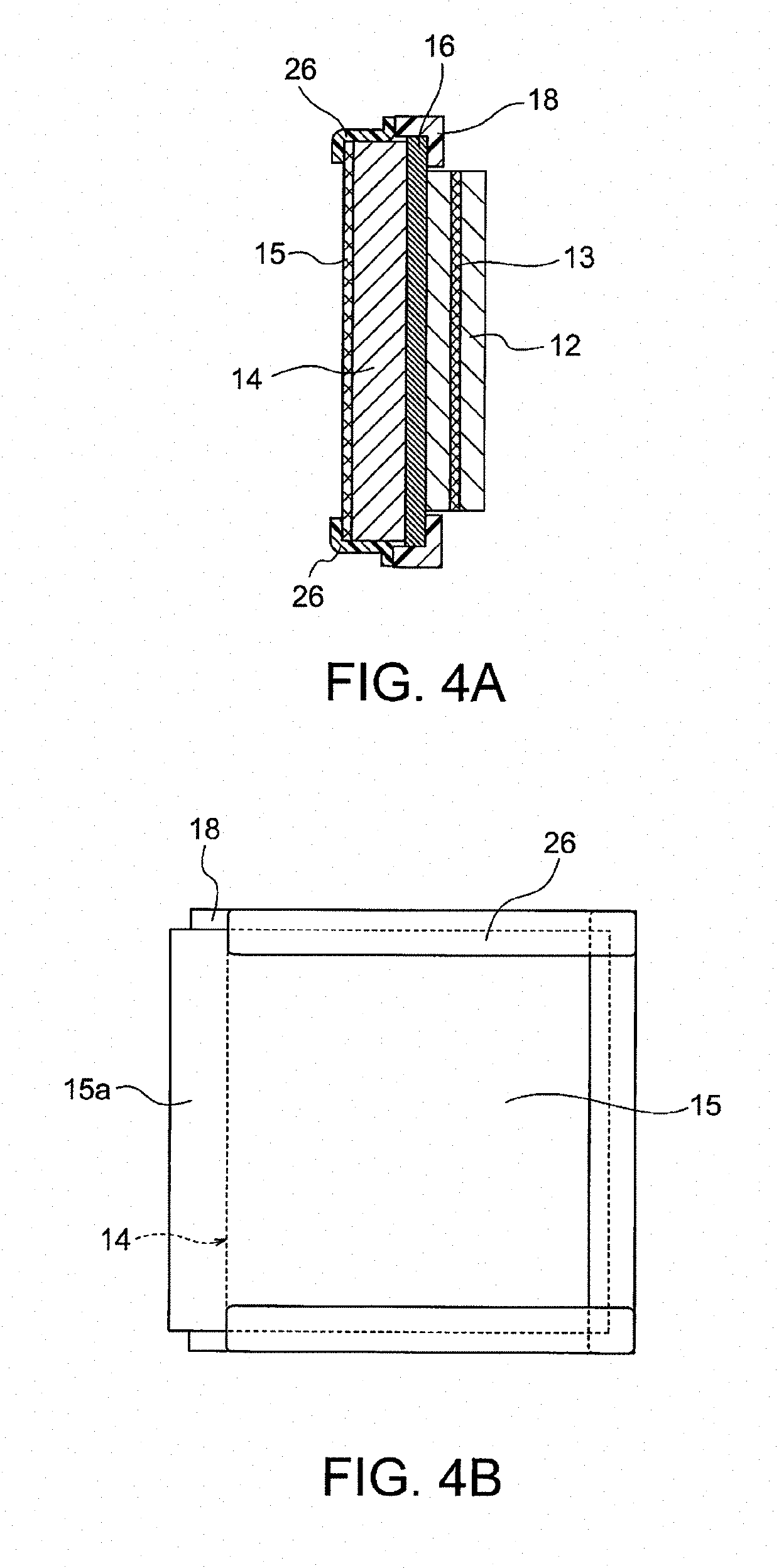Electrode/separator layered body and nickel zinc battery equipped therewith
a technology of electroseparator and layered body, which is applied in the direction of nickel accumulators, cell components, cell component details, etc., can solve the problems of affecting the efficiency of the assembling process, requiring troublesome joining work, and affecting the assembling process, so as to achieve the effect of preventing the short circui
- Summary
- Abstract
- Description
- Claims
- Application Information
AI Technical Summary
Benefits of technology
Problems solved by technology
Method used
Image
Examples
example 1
[0084]An electrode-separator assembly and a nickel-zinc battery as illustrated in FIG. 7 were prepared and evaluated as follows:
(1) Preparation of Positive-Electrode Plate
[0085]Fine pores in a nickel foam sheet, which is a positive-electrode collector 13, were filled with a paste containing an electrode active material, such as nickel hydroxide. The nickel foam sheet filled with the active material was dried, rolled, and then cut into a square positive-electrode plate 12 (93 mm by 93 mm).
(2) Preparation of Negative-Electrode Plate
[0086]A mixture of powdered zinc oxide (80 parts by weight), powdered zinc (20 parts by weight), and polytetrafluoroethylene particles (3 parts by weight) was applied to a negative-electrode collector 15 consisting of a copper mesh. A square negative-electrode plate 14 (100 mm by 100 mm) was prepared that had a porosity of about 50% where an active material was applied over a predetermined area.
(3) Preparation of LDH Separator with Outer Frame
[0087]A gas-im...
example 3 (
Reference)
[0092]A functional layer containing LDH and a composite material were prepared and evaluated in accordance with the following steps. The functional layer in this example has a LDH membrane and LDH in a porous substrate. The composite material in this example corresponds to the LDH separator.
(1) Preparation of Porous Substrate
[0093]Powdered alumina (100 parts by weight) (AES-12 available from Sumitomo Chemical Co., Ltd.) was mixed with dispersion medium (70 parts by weight) (xylene:butanol=1:1), binder (11.1 parts by weight) (polyvinyl butyral BM-2 available from Sekisui Chemical Co., Ltd), plasticizer (5.5 parts by weight) (DOP available from Kurogane Kasei Co., Ltd.), and dispersant (2.9 parts by weight) (RHEODOL SP-030 available from Kao Corporation). This mixture was defoamed through agitation under reduced pressure to yield slurry. The slurry was shaped into a sheet on a polyethylene terephthalate film with a tape shaping machine to yield a green sheet having a dried t...
PUM
| Property | Measurement | Unit |
|---|---|---|
| width | aaaaa | aaaaa |
| mean particle size | aaaaa | aaaaa |
| width | aaaaa | aaaaa |
Abstract
Description
Claims
Application Information
 Login to View More
Login to View More - R&D
- Intellectual Property
- Life Sciences
- Materials
- Tech Scout
- Unparalleled Data Quality
- Higher Quality Content
- 60% Fewer Hallucinations
Browse by: Latest US Patents, China's latest patents, Technical Efficacy Thesaurus, Application Domain, Technology Topic, Popular Technical Reports.
© 2025 PatSnap. All rights reserved.Legal|Privacy policy|Modern Slavery Act Transparency Statement|Sitemap|About US| Contact US: help@patsnap.com



